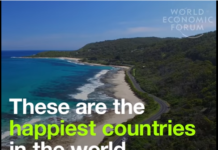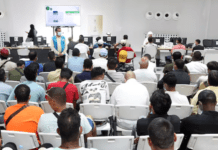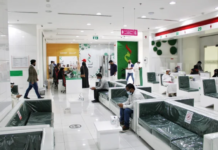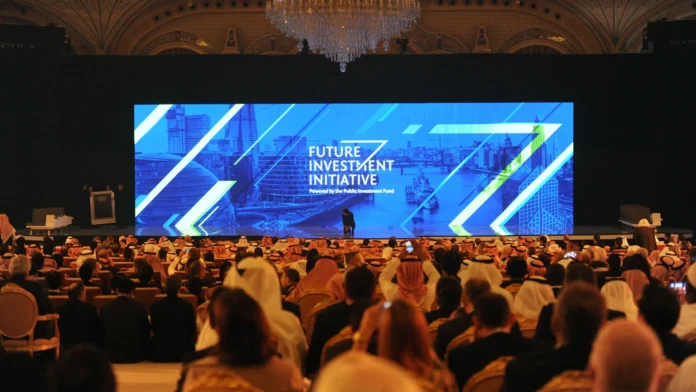As billions remain excluded from economic prosperity, FII9 convenes world’s top investors and policymakers to address widening wealth gaps and chart pathways to inclusive growth
By Anthon Garcia and Abdul Basit
The ninth edition of the Future Investment Initiative (FII9), scheduled for October 27-30, 2025, at the King Abdulaziz International Conference Center in Riyadh, arrives at a critical juncture for global prosperity. As the invitation-only summit prepares to convene over 7,500 delegates and 600 prominent speakers, recent data underscores the urgency of its mission.
Currently, only 2.4 billion people—less than a third of the global population—live at or above the $25-per-day threshold that defines a prosperous life, according to the World Economic Forum WEF), referencing data from World Data Lab estimates. The World Bank refined its shared prosperity target in June 2023, establishing this $25-a-day threshold (in purchasing power parity) as the benchmark for prosperity.
“Our theme, ‘The Key to Prosperity,’ acknowledges the complexity of today’s global challenges and points to opportunities to create a positive impact for humanity,” said Richard Attias, Chairman of the FII Institute Executive Committee. “FII9 is the place for new thinking, strategic conversations, and forging partnerships in the cause of prosperity and progress.”
The Prosperity Paradox: Innovation Meets Fragmentation
The conference’s central focus on “innovation fragmentation” reflects a fundamental paradox of our times: technological and policy advancements drive growth yet simultaneously create unintended challenges that can deepen inequality. This tension is particularly evident in emerging technologies like artificial intelligence and robotics, which promise unprecedented productivity gains while raising concerns about job displacement and ethical governance.
The World Bank’s new Global Prosperity Gap metric reveals the scale of the challenge. Sub-Saharan Africa faces the steepest climb, with incomes needing to increase more than 12-fold on average to reach the $25-per-day prosperity standard. South Asia follows with a gap of 6.2, while the global average stands at 4.9—meaning worldwide incomes must increase five-fold for universal prosperity.
A Shifting Economic Landscape
FII9 takes place against the backdrop of a historic economic shift. According to World Data Lab’s analysis, the prosperous population in emerging markets overtook that of OECD countries in 2021. However, this milestone masks stark disparities: only 20% of people in emerging markets enjoy prosperous lives, compared to 82% in OECD countries.
The conference’s four-day agenda reflects these complex dynamics:
October 27: Exclusive Conclaves Invitation-only sessions will bring together top investors, CEOs, and policymakers for candid, confidential discussions on sensitive economic and geopolitical issues affecting global prosperity.
October 28-29: Main Conference The heart of FII9 will feature 250 interactive sessions addressing critical themes:
- AI and robotics’ dual impact on productivity and employment
- Wealth creation strategies amid rising inequality
- Geopolitical implications of resource scarcity
- Demographic shifts reshaping future workforces
- Balancing economic growth with environmental sustainability
October 30: Investment Day The summit concludes with a focus on action: high-impact deal-making, venture capital strategies, and showcases of next-generation technologies poised to drive inclusive growth.
The $25-a-Day Divide: Understanding Modern Prosperity
The conference’s discussions will be informed by evolving definitions of prosperity. At $25 per day—or $9,125 annually—individuals can afford not just essentials but also goods and services associated with living the good life: a refrigerator, a motorcycle, visits to the hair salon, and occasional travel.
World Data Lab’s consumption projection model shows, as reported by WEF, that at this threshold a typical person spends approximately $13.50 on essentials (food: $6.80, housing: $5.40, clothing: $1.40), leaving $11.50 for discretionary purchases. This spending pattern shift represents a crucial economic inflection point, as discretionary spending drives innovation, creates jobs, and fuels economic growth across sectors.
Regional Dynamics and Global Implications
The prosperity landscape varies dramatically by region, creating both challenges and opportunities for investors and policymakers gathering in Riyadh. According to the World Bank’s Poverty, Prosperity, and Planet Report, East Asia’s remarkable transformation—reducing its Prosperity Gap from 16.5 in 1990 to 2.8 in 2024—offers lessons for other regions. Approximately two-thirds of this progress came from income growth, while one-third resulted from reduced inequality.
Meanwhile, Sub-Saharan Africa’s slower progress highlights the urgency of innovative approaches. Despite accounting for only 16% of the global population, the region contributes nearly 40% of the global prosperity shortfall—a disparity that poses risks to global stability and presents opportunities for transformative investments.
The Path to Global Prosperity
WEF says that the number of people living in prosperity grows by about 85 million every year—three people every second. However, because global population also grows by approximately 70 million annually, the net reduction in people living below the prosperity line is only around 15 million per year.
If current trends continue, the world will experience a tipping point in 2049 when the prosperous will outnumber the non-prosperous for the first time. The COVID-19 pandemic temporarily reversed progress, pushing the non-prosperous population to a peak of 5.7 billion, though numbers have since begun declining again.
Investment Implications and Market Shifts
FII9’s focus on investment strategies comes as the WEF reveals, citing World Data Lab analyses, that while emerging markets have more prosperous people than OECD countries since 2021, the prosperous population in emerging markets will only outspend their OECD counterparts after 2033. This shift is already apparent in how major global brands from emerging markets are competing internationally, while leading Western brands increasingly depend on Asia for growth.
The conference will explore how this transition creates new investment opportunities, particularly in sectors serving the growing middle class in emerging markets. With only 20% of emerging market populations currently living prosperously compared to 82% in OECD countries, the potential for growth remains substantial.
From Paradox to Progress
As global leaders prepare to convene in Riyadh, FII9’s emphasis on finding “The Key to Prosperity” acknowledges both the complexity of current challenges and the unprecedented opportunities for creating positive impact. The conference’s structure—from exclusive conclaves to public sessions and investment negotiations—reflects recognition that achieving global prosperity requires collaboration across sectors, regions, and ideologies.
The World Bank’s twin goals of ending poverty and promoting shared prosperity, established in 2013, provide a framework for these discussions. With the Global Prosperity Gap standing at 4.9—down from 10.9 in 1990 but still requiring a five-fold increase in global incomes—the urgency for innovative solutions has never been greater.
As delegates prepare to address innovation fragmentation, AI ethics, resource scarcity, and demographic shifts, their decisions will help determine whether the projected 2049 prosperity tipping point can be accelerated—or whether billions will remain excluded from prosperity for decades to come.
Additional programming details, including specialized workshops and networking events, will be announced as the October summit approaches.








































